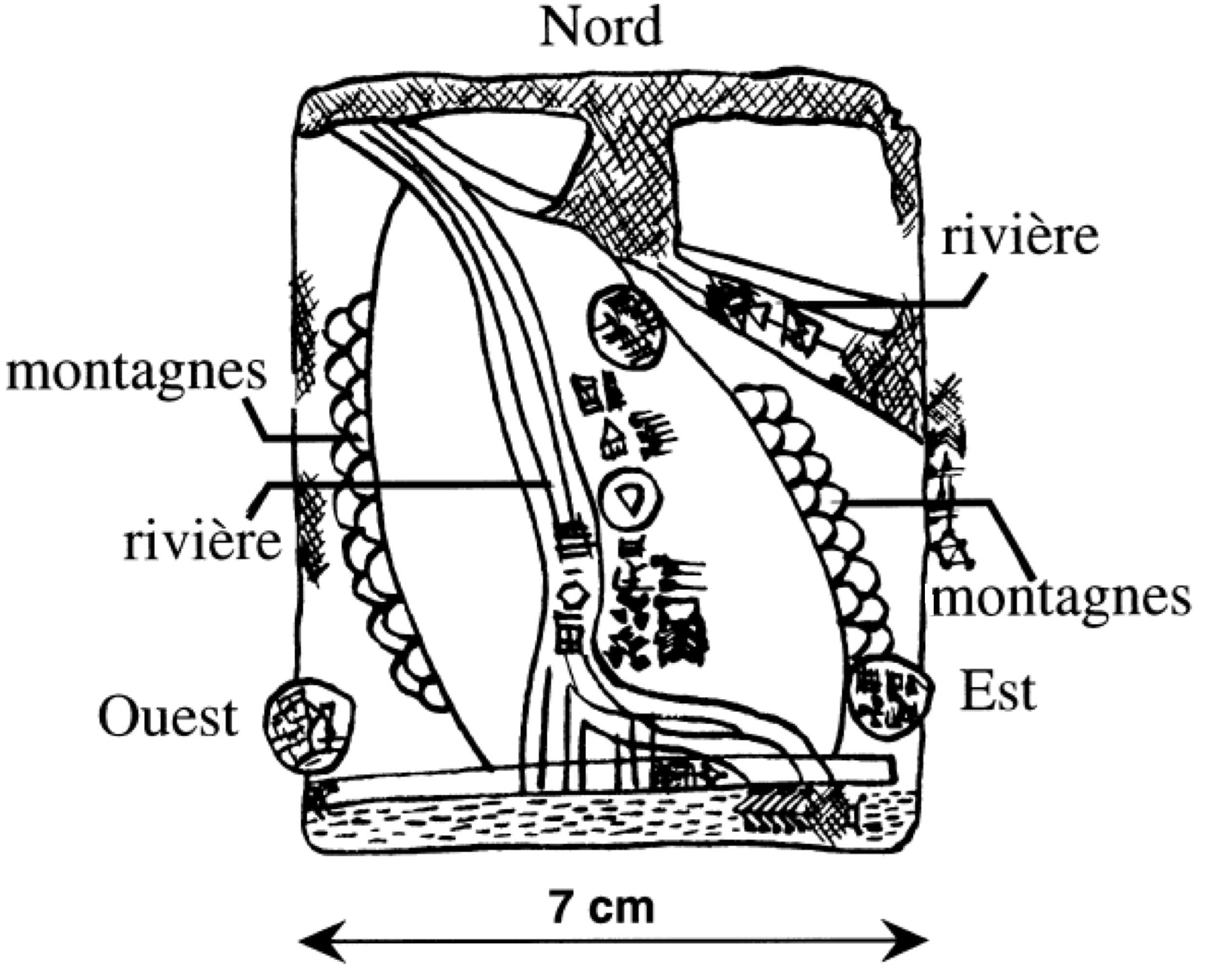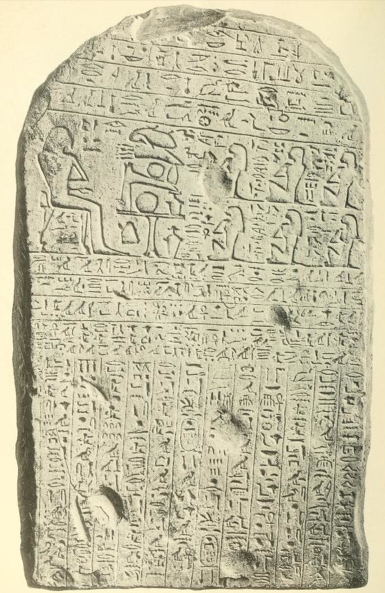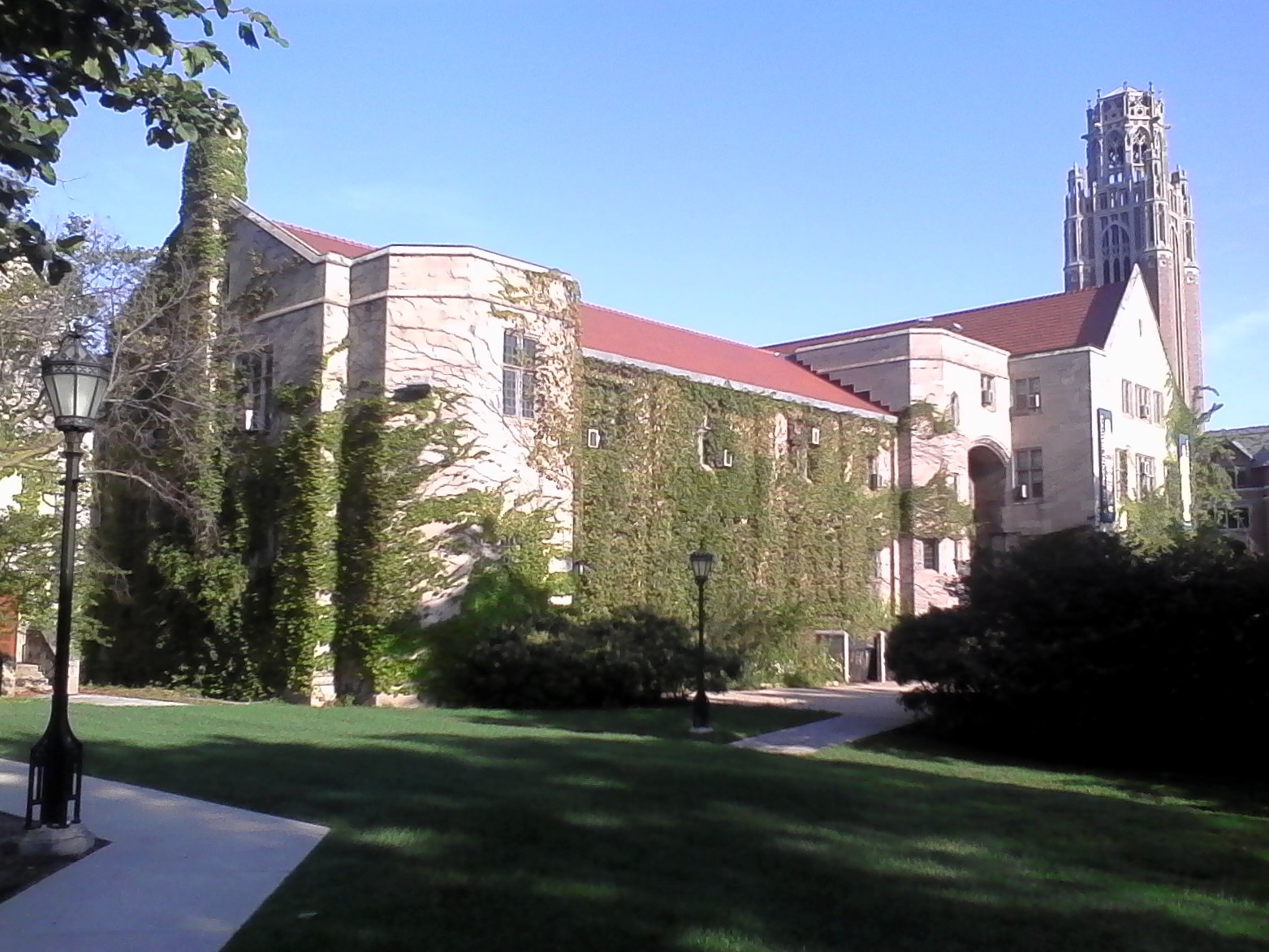|
Nuzi Texts
The Nuzi texts are ancient documents found during an excavation of Nuzi, an ancient Mesopotamian city southwest of Kirkuk in modern Kirkuk Governorate of Iraq, located near the Tigris river. The site consists of one medium-sized multiperiod tell and two small single period mounds. The texts are mainly legal and business documents. They have previously been viewed as evidence for the age and veracity of certain parts of the Old Testament, especially of the Patriarchal age, but that attribution is now doubted by most scholars. Archeological site and tablets Tablets from the site began appearing back as far as 1896, but the first serious archaeological efforts only began in 1925 after Gertrude Bell noticed tablets appearing in the markets of Baghdad. The dig was mainly worked by Edward Chiera, Robert Pfeiffer, and Richard Starr under the auspices of the Iraq Museum and the Baghdad School of the American Schools of Oriental Research and later the Harvard University and Fogg Art Museu ... [...More Info...] [...Related Items...] OR: [Wikipedia] [Google] [Baidu] |
Nuzi
Nuzi (or Nuzu; Akkadian Gasur; modern Yorghan Tepe, Iraq) was an ancient Mesopotamian city southwest of the city of Arrapha (modern Kirkuk), located near the Tigris river. The site consists of one medium-sized multiperiod tell and two small single period mounds. History The site showed occupation as far back as the late Uruk period. The city, then named Gasur, was founded in the third millennium during the time of the Akkadian Empire. In the middle of the second millennium the Hurrians gained control of the town and renamed it Nuzi. The history of the site during the intervening period is unclear, though the presence of a few cuneiform tablets from the Old Assyrian Empire indicates that trade with nearby Assur was taking place. After the fall of the Hurrian kingdom of Mitanni to Ashur-uballit I of the Middle Assyrian Empire, Nuzi went into gradual decline. Note that while the Hurrian period is well known from full excavation of those strata, the earlier history is not as reliab ... [...More Info...] [...Related Items...] OR: [Wikipedia] [Google] [Baidu] |
Harvard University
Harvard University is a private Ivy League research university in Cambridge, Massachusetts. Founded in 1636 as Harvard College and named for its first benefactor, the Puritan clergyman John Harvard, it is the oldest institution of higher learning in the United States and one of the most prestigious and highly ranked universities in the world. The university is composed of ten academic faculties plus Harvard Radcliffe Institute. The Faculty of Arts and Sciences offers study in a wide range of undergraduate and graduate academic disciplines, and other faculties offer only graduate degrees, including professional degrees. Harvard has three main campuses: the Cambridge campus centered on Harvard Yard; an adjoining campus immediately across Charles River in the Allston neighborhood of Boston; and the medical campus in Boston's Longwood Medical Area. Harvard's endowment is valued at $50.9 billion, making it the wealthiest academic institution in the world. Endowment inco ... [...More Info...] [...Related Items...] OR: [Wikipedia] [Google] [Baidu] |
Manuscripts
A manuscript (abbreviated MS for singular and MSS for plural) was, traditionally, any document written by hand – or, once practical typewriters became available, typewritten – as opposed to mechanically printed or reproduced in some indirect or automated way. More recently, the term has come to be understood to further include ''any'' written, typed, or word-processed copy of an author's work, as distinguished from the rendition as a printed version of the same. Before the arrival of printing, all documents and books were manuscripts. Manuscripts are not defined by their contents, which may combine writing with mathematical calculations, maps, music notation, explanatory figures, or illustrations. Terminology The study of the writing in surviving manuscripts, the "hand", is termed palaeography (or paleography). The traditional abbreviations are MS for manuscript and MSS for manuscripts, while the forms MS., ms or ms. for singular, and MSS., mss or mss. for plu ... [...More Info...] [...Related Items...] OR: [Wikipedia] [Google] [Baidu] |
List Of Artifacts In Biblical Archaeology
The following is a list of inscribed artifacts, items made or given shape by humans, that are significant to biblical archaeology. Selected artifacts significant to biblical chronology These table lists inscriptions which are of particular significance to the study of biblical chronology. The table lists the following information about each artifact: ;Name: In English ;Current location: Museum or site ;Discovered: Date and location of discovery ;Date: Proposed date of creation of artifact ;Writing: Script used in inscription (if any) ;Significance: Reason for significance to biblical archeology ;Refs: ANET and COS references, and link to editio princeps (EP), if known Egyptian Other significant Egyptian artifacts * Execration texts – earliest references to many Biblical locations * Papyrus Brooklyn 35.1446– A document that lists the names of 45 individuals, including a Canaanite woman named "Šp-ra." Scholars assume that this is a hieroglyphic transliteration of the Hebre ... [...More Info...] [...Related Items...] OR: [Wikipedia] [Google] [Baidu] |
Book Of Genesis
The Book of Genesis (from Greek ; Hebrew: בְּרֵאשִׁית ''Bəreʾšīt'', "In hebeginning") is the first book of the Hebrew Bible and the Christian Old Testament. Its Hebrew name is the same as its first word, ( "In the beginning"). Genesis is an account of the creation of the world, the early history of humanity, and of Israel's ancestors and the origins of the Jewish people. Tradition credits Moses as the author of Genesis, as well as the books of Exodus, Leviticus, Numbers and most of Deuteronomy; however, modern scholars, especially from the 19th century onward, place the books' authorship in the 6th and 5th centuries BC, hundreds of years after Moses is supposed to have lived.Davies (1998), p. 37 Based on scientific interpretation of archaeological, genetic, and linguistic evidence, most scholars consider Genesis to be primarily mythological rather than historical. It is divisible into two parts, the primeval history (chapters 1–11) and the ancestr ... [...More Info...] [...Related Items...] OR: [Wikipedia] [Google] [Baidu] |
Tell Al-Fakhar
Tell al-Fakhar ( ar, تل الفخار "Pottery Mound") is a '' tell'', or archaeological settlement mound, in Kirkuk Governorate, northeastern Iraq. Excavations were carried out at the site between 1967 and 1969 by the Directorate-General of Antiquities of Iraq. The site measures and is high. Excavations revealed two occupation phases that were dated to the Mitanni/Kassite and Neo-Assyrian periods, or mid-second and early-first millennia BCE. The mid-second millennium phase consisted of a large building, dubbed the "Green Palace", where an archive of circa 800 clay tablets was found. History of research The site was excavated by the Directorate-General of Antiquities of Iraq under the direction of Yasin Mahmoud al-Khalesi during one season in the winter of 1967–1968 lasting from 22 October to 27 January. The excavation was prompted by the fact that the site was threatened by the development of an irrigation project in the region and because illegal digging activities had been ... [...More Info...] [...Related Items...] OR: [Wikipedia] [Google] [Baidu] |
Akkadian Empire
The Akkadian Empire () was the first ancient empire of Mesopotamia after the long-lived civilization of Sumer. It was centered in the city of Akkad (city), Akkad () and its surrounding region. The empire united Akkadian language, Akkadian and Sumerian language, Sumerian speakers under one rule. The Akkadian Empire exercised influence across Mesopotamia, the Levant, and Anatolia, sending military expeditions as far south as Dilmun and Magan (civilization), Magan (modern Saudi Arabia, Bahrain, and Oman) in the Arabian Peninsula.Mish, Frederick C., Editor in Chief. "Akkad" ''Webster’s Ninth New Collegiate Dictionary''. ninth ed. Springfield, MA: Merriam-Webster 1985. ). The Akkadian Empire reached its political peak between the 24th and 22nd centuries BC, following the conquests by its founder Sargon of Akkad. Under Sargon and his successors, the Akkadian language was briefly imposed on neighboring conquered states such as Elam and Gutian people, Gutium. Akkad is sometimes regar ... [...More Info...] [...Related Items...] OR: [Wikipedia] [Google] [Baidu] |
Hurrian
The Hurrians (; cuneiform: ; transliteration: ''Ḫu-ur-ri''; also called Hari, Khurrites, Hourri, Churri, Hurri or Hurriter) were a people of the Bronze Age Near East. They spoke a Hurrian language and lived in Anatolia, Syria and Northern Mesopotamia. The largest and most influential Hurrian nation was the kingdom of Mitanni, its ruling class perhaps being Indo-Aryan speakers. The population of the Hittite Empire in Anatolia included a large population of Hurrians, and there is significant Hurrian influence in Hittite mythology. By the Early Iron Age, the Hurrians had been assimilated with other peoples. The state of Urartu later covered some of the same area. Language The Hurrian language is closely related to the Urartian language, the language of the ancient kingdom of Urartu. Together they form the Hurro-Urartian language family. The external connections of the Hurro-Urartian languages are disputed. There exist various proposals for a genetic relationship to ot ... [...More Info...] [...Related Items...] OR: [Wikipedia] [Google] [Baidu] |
Baghdad
Baghdad (; ar, بَغْدَاد , ) is the capital of Iraq and the second-largest city in the Arab world after Cairo. It is located on the Tigris near the ruins of the ancient city of Babylon and the Sassanid Persian capital of Ctesiphon. In 762 CE, Baghdad was chosen as the capital of the Abbasid Caliphate, and became its most notable major development project. Within a short time, the city evolved into a significant cultural, commercial, and intellectual center of the Muslim world. This, in addition to housing several key academic institutions, including the House of Wisdom, as well as a multiethnic and multi-religious environment, garnered it a worldwide reputation as the "Center of Learning". Baghdad was the largest city in the world for much of the Abbasid era during the Islamic Golden Age, peaking at a population of more than a million. The city was largely destroyed at the hands of the Mongol Empire in 1258, resulting in a decline that would linger through many c ... [...More Info...] [...Related Items...] OR: [Wikipedia] [Google] [Baidu] |
Harvard Semitic Museum
The Harvard Museum of the Ancient Near East (HMANE, previously the Harvard Semitic Museum) is a museum founded in 1889. It moved into its present location at 6 Divinity Avenue in Cambridge, Massachusetts, in 1903. Description From the beginning, HMANE was the home of the Department of Near Eastern Languages and Civilizations, a departmental library, a repository for research collections, a public educational institute, and a center for archaeological exploration. Among the museum's early achievements were the first scientific excavations in the Holy Land (at Samaria in 1907–1912) and excavations at Nuzi in Mesopotamia and Tell el-Khaleifeh in the Sinai, where the earliest alphabet was found. The museum's artifacts include pottery, cylinder seals, sculpture, coins, cuneiform tablets, and Egyptian mummy sarcophagi. Many are from museum-sponsored excavations in Jordan, Iraq, Egypt, Cyprus, Israel, and Tunisia. The museum holds plaster casts of the Black Obelisk of Shalmaneser II ... [...More Info...] [...Related Items...] OR: [Wikipedia] [Google] [Baidu] |
University Of Chicago Oriental Institute
The Oriental Institute (OI), established in 1919, is the University of Chicago's interdisciplinary research center for ancient Near Eastern ("Orient") studies and archaeology museum. It was founded for the university by professor James Henry Breasted with funds donated by John D. Rockefeller, Jr. It conducts research on ancient civilizations throughout the Near East, including at its facility, Chicago House, in Luxor, Egypt. The institute publicly exhibits an extensive collection of artifacts related to ancient civilizations at its on-campus building in Hyde Park, Chicago. According to anthropologist William Parkinson of the Field Museum, the OI's highly focused "near Eastern, or southwest Asian and Egyptian" collection is one of the finest in the world. History In the early 20th century, James Henry Breasted built up the collection of the university's Haskell Oriental Museum, which he oversaw along with his field work, and teaching duties. He dreamed, however, of establishi ... [...More Info...] [...Related Items...] OR: [Wikipedia] [Google] [Baidu] |
Fogg Art Museum
The Harvard Art Museums are part of Harvard University and comprise three museums: the Fogg Museum (established in 1895), the Busch-Reisinger Museum (established in 1903), and the Arthur M. Sackler Museum (established in 1985), and four research centers: the Archaeological Exploration of Sardis (founded in 1958), the Center for the Technical Study of Modern Art (founded in 2002), the Harvard Art Museums Archives, and the Straus Center for Conservation and Technical Studies (founded in 1928). The three museums that constitute the Harvard Art Museums were initially integrated into a single institution under the name Harvard University Art Museums in 1983. The word "University" was dropped from the institutional name in 2008. The collections include approximately 250,000 objects in all media, ranging in date from antiquity to the present and originating in Europe, North America, North Africa, the Middle East, South Asia, East Asia, and Southeast Asia. The main building contains of ... [...More Info...] [...Related Items...] OR: [Wikipedia] [Google] [Baidu] |










